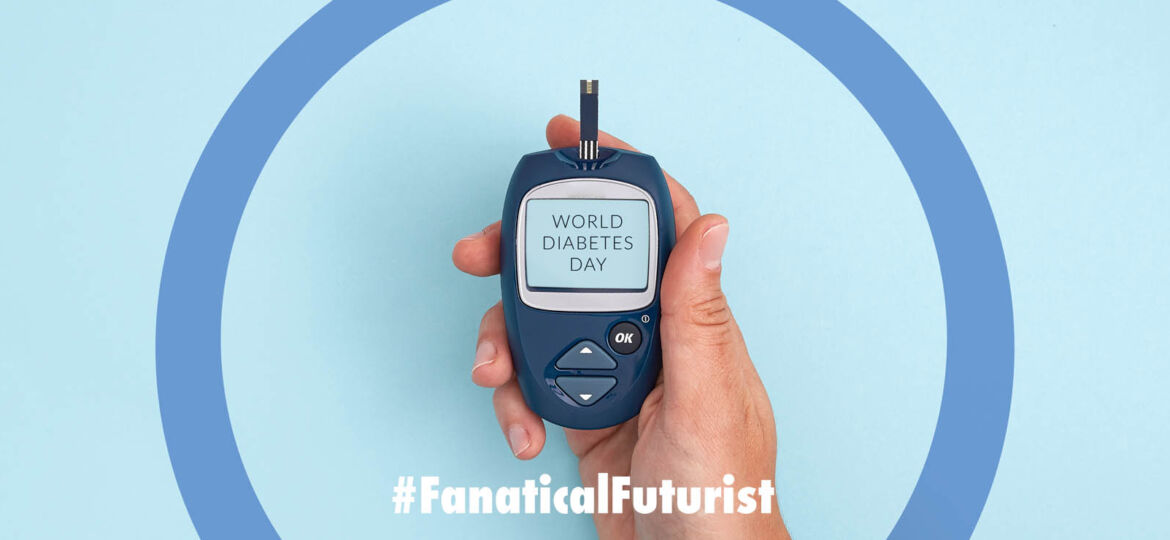
WHY THIS MATTERS IN BRIEF
Diabetes is quickly becoming one of the world’s top afflictions, and 3D printing could offer an on demand solution to end it forever.
 Love the Exponential Future? Join our XPotential Community, future proof yourself with courses from XPotential University, connect, watch a keynote, or browse my blog.
Love the Exponential Future? Join our XPotential Community, future proof yourself with courses from XPotential University, connect, watch a keynote, or browse my blog.
Over the past couple of years there have been a number of breakthroughs in 3D Bio-Printing human organs and tissues on demand including bones, brain tissue, cartilage, corneas, hearts, kidneys, muscle, skin, and more.
Now, in another development EPFL spin off Readily3D have announced they’ve developed a new system that can print biological tissue in just 30 seconds and that it’s already being used in a large scale European project that aims to 3D print a living model of the pancreas which can then be used to test new drugs and in time help cure diabetes by providing people in need with replacement organs – note the word curing not just treating …
See how it works
The first time you see the new model it’s a transparent shape on a computer screen – a small electronic replica of the human pancreas. Then just 30 seconds later the tissue is printed out on a bio-printer, blood vessels and all, from a sample of human stem cells.
The pancreas is a vital organ located just behind the stomach. It serves several functions, such as producing enzymes and bicarbonates essential for digestion and secreting a variety of hormones – including insulin, which is the hormone that regulates blood sugar levels. As a result, pancreatic disease often leads to diabetes since the damaged cells can no longer produce the insulin the body needs.
Over 450 million adults around the world suffer from diabetes, including 60 million in Europe. In Switzerland, 4.4% of the population reported in 2017 having been diagnosed with the disease. And the number of patients is growing worldwide. Diabetes is the second-leading cause of amputation behind accidents and increases the risk of a heart attack or stroke by a factor of eight and of kidney failure, which requires dialysis, by a factor of nine. Diabetes is also the leading cause of blindness among adults. Methods for improving diabetes diagnosis and treatment could thus bring major benefits to public health.
The bio-printing technology developed at EPFL uses a biological gel containing a patient’s stem cells. A laser is applied to the gel to solidify it through polymerisation. The location and intensity of the laser beam can be controlled in order to solidify only those areas of the gel needed to form the desired tissue.
“One of the main advantages of our method is that it can create tissue in a single block, making it particularly useful for printing soft tissue like human organs,” says Paul Delrot, the CTO of Readily3D.
There are numerous benefits to bio-printed tissue. It can be tailor-made since it’s created from a patient’s own stem cells, and it eliminates the need to conduct animal testing – something that AI, Humans on Chips, and creating digital twins of humans is also trying to accomplish.
“What’s more, patients won’t have to try out an array of drugs, some of which may have unpleasant side effects, before finding the right one for them,” says Damien Loterie, the CEO of Readily3D.
“Developing a system that can print 3D tissue at the cubic centimeter scale and faithfully replicate the functioning of a live pancreas is a huge challenge, which we hope to meet with this technology,” says Christophe Moser, an associate on the project. And, in time the team hopes they’ll be able to expand their technology so it can be used to bio-print all kinds of other tissues including treatments for cancer, for example, or eventually for producing human transplant organs on demand.

















[…] a condition in which the body produces too little or no insulin, and they range from sci-fi like bio-mechanical organs all the way through to new kinds of gene therapies, but this one – where researchers use designer […]